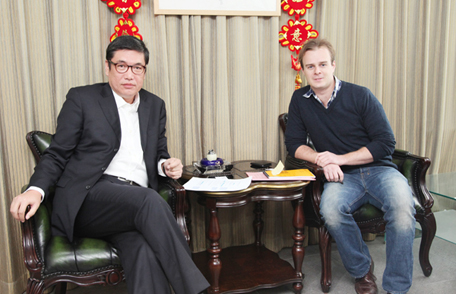China's new leaders seem to be placing their hopes for economic growth on urbanization. They see an upsurge in demand for a whole range of services -- from housing to schooling and health care as the rural population is increasingly pulled into the urban economy.
But high urbanization has its costs, argues a new report from Beijing Anbound Information, a private think tank that advises a number of local governments around China. Chief among those costs, the report says, is the magnification of social problems -- and in a country with a considerable amount of social friction, that certainly is something to consider.
Anbound contends that once urbanization reaches 50%, the potential for social unrest rises considerably. China has already crossed that line, having reached 51.27% at the end of 2011, according to data from the National Bureau of Statistics.
'An urbanization rate of 50% is correlated with rising social risks in urban areas,' Anbound said. 'It is a significant level.'
The study points to some interesting cases in other countries that illustrate how urbanization -- along with a wide range of other social and political issues -- led to more serious social unrest and, in some cases, much deeper instability.
Mexico, for example, saw a population shift in the 1960's, with urbanization crossing 50% in that decade. In 1968, just days ahead of the Summer Olympics in Mexico City, social and political pressures exploded with the killing of dozens students and other protesters unhappy with government policies.
Anbound's researchers also drew lessons from 1979 Iran -- where angry crowds overthrew the pro-Western shah and fundamentally altered the development path of that country. At that time Iran's urbanization rate was also around the 50% level, according to Beijing Anbound, which advises a number of local governments around China.
In 2010, China was rocked by 180,000 protests, riots and other 'mass incidents' -- a term coined by the Chinese government to refer to protests and demonstrations. Those mass incidents were more than four times the tally from a decade earlier, according to Sun Liping, a professor at Tsinghua University.
Land is always a ready source of conflict and urbanization aggravates existing tensions linked to development projects. More than one-fifth of the mass incidents in 2012 were related to land disputes, according to the government-backed Legal Daily. The newspaper also says that the conflicts have been shifting towards the cities. While it gives no comparative figures, it says 51.1% of mass incidents involved urban residents in 2012.
As rural residents flock to the cities in search of higher paying jobs, residents of the cities and migrants will have to share the same resources, including social welfare benefits. That has the potential to create conflicts, Anbound said.
It pointed to clashes with police in Zengcheng in Guangdong province in 2011 following a dispute between local authorities and street vendors who had moved to the town from rural Sichuan. Wang Lianmei, a villager from Sichuan, was injured during a struggle with local government officials, who accused her and her husband of blocking traffic, the Zengcheng government said in a statement posted on its website. Hundreds of people later clashed with local officials and police, the statement added.
A total of 19 suspects, most of them out-of-towners, were arrested for 'obstructing justice, looking for trouble and sabotaging property,' the local government said a separate statement.
Densely populated cities also lead to traffic congestion and greater pollution, and if the issues are not addressed, they too could plant the seeds of social instability, Anbound added.
In January, Beijing was blanketed by toxic smog that air that captured headlines around the world. Netizens, fed up with the pollution, screamed for solutions and even the official media called for action from the government.
'These potential risks could eventually turn into political issues,' the think tank said.
China has already signaled it aims to address some of these sources of tension. On Tuesday the State Council, or the cabinet, unveiled sweeping policy guidelines to close the growing gap between rich and poor, vowing to provide for the needy, strengthen its social safety net and force powerful state companies to turn over more of their profits to the government to pay for these ambitious welfare programs ( in Chinese).
'The wealth gap is an issue that needs to be addressed,' Anbound said.
Media link: http://blogs.wsj.com/chinarealtime/2013/02/08/chinas-urbanization-risk-magnified-unrest/

Image: The correspondent of the Wall Street Journal interviewed Chan Kung, founder of ANBOUND.
